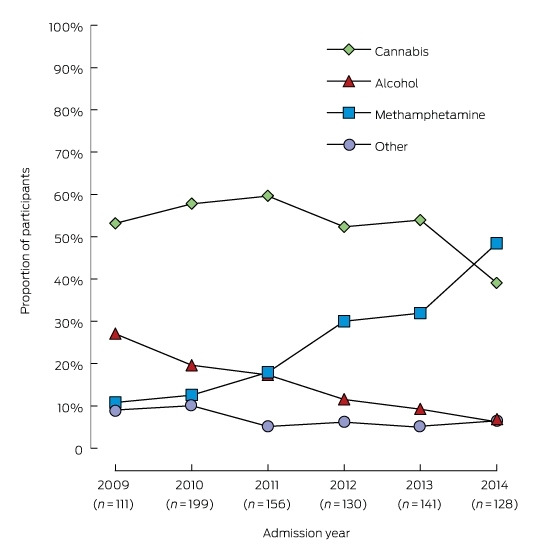Number of at-risk adolescents using methamphetamines doubles in five years
The number of at-risk adolescents in drug and alcohol treatment programs who reported taking methamphetamines doubled in the five years to 2014, new research shows.
The number of at-risk adolescents in drug and alcohol treatment programs who reported taking methamphetamines doubled in the five years to 2014, new research shows.

Dan Wheelahan
UNSW Media Office
02 9385 1933 or 0435 930 465
d.wheelahan@unsw.edu.au
The number of at-risk adolescents in drug and alcohol treatment programs who reported taking methamphetamines doubled in the five years to 2014, new research shows.
Almost 60% of young people entering rehab at the Ted Noffs Foundation residential drug and alcohol treatment programs in 2014 said they were currently using methamphetamines, up from 30% in 2009, according to a study published today in the Medical Journal of Australia.
The study is based on surveys with 865 adolescents, aged between 14 and 18 years, from mid-2009 to the end of 2014, representing a large proportion of adolescents in residential drug and alcohol treatment programs in NSW and the ACT.
While the adolescents also recorded high levels of cannabis use (85%), tobacco use (73%), and alcohol use (64%), methamphetamine was the only drug to show a significant upward trend over time, becoming the most commonly reported ‘drug of greatest concern’ in 2014.*

Methamphetamine was the only drug to show a significant upward trend over time as the ‘drug of greatest concern’ reported by the teenagers referred for drug and alcohol treatment between 2009 and 2014 (Graphic: Dr Sally Nathan).
Of those who reported using methamphetamine in 2014, almost 85% were inhaling the drug as smoke or vapour, up from 12% in 2009, suggesting the form of the drug being used had shifted from powder to ice or crystal.
The researchers also found that young people who had unstable living arrangements and who were known to police were more likely to report current methamphetamine use.
Lead researcher Dr Sally Nathan, from UNSW’s School of Public Health and Community Medicine, said the findings were a call to action for state and federal governments to increase funding for drug and alcohol treatment programs and follow-up services for vulnerable teenagers.
“Broad-based, ice-related education campaigns are well and good, but they must be supplemented by a more targeted approach to early intervention and treatment for those who are most vulnerable,” Dr Nathan said.
“Accommodation support for these adolescents after they leave residential drug and alcohol treatment programs is a major gap in the system right now. Without intensive and ongoing support after rehab, these kids risk ending up right back where they started.”
The study found young people enrolled in a special education classes at school were also more likely to use methamphetamine, suggesting those with learning difficulties may also be at higher risk.
Broad-based, ice-related education campaigns are well and good, but they must be supplemented by a more targeted approach to early intervention and treatment for those who are most vulnerable.
“These young people are in precarious positions in their lives which may make them more likely to become dependent on methamphetamine,” Dr Nathan said.
The study backs up recent research by UNSW’s National Drug and Alcohol Research Centre, which found the 15 to 24 year age group accounted for the bulk of the increase in regular and dependent users of methamphetamine since 2010.
“Studies of young people as they enter into drug and alcohol treatment are a more targeted snapshot of problematic drug use among young people compared to population-based surveys, which often fail to capture drug use changes in at-risk groups,” Dr Nathan said.